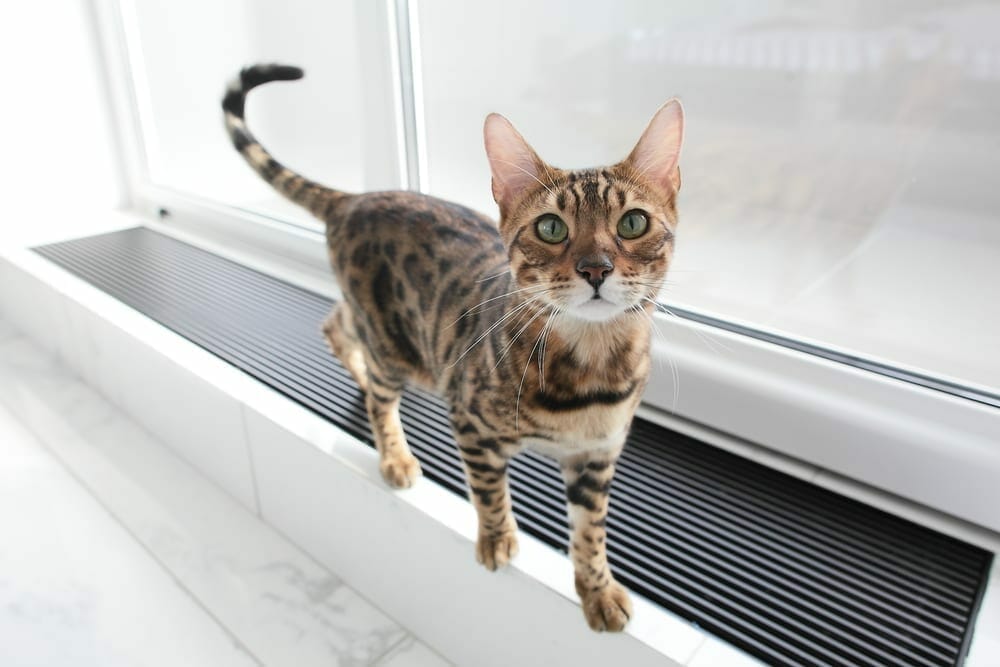
Cat Tails – What’s That All About?
In our next What’s That All About edition, Pet Insurance Australia takes a look at the humble tail and the role it plays in the lives of our cats.
For some of our cats, it seems like their tails are a completely separate entity. Many cat owners will happily confirm that their cat’s tails certainly has a mind of it’s own. It’s not uncommon to witness a cat peacefully sleeping away with their tail swishing or tapping in some sort of impatient trance-like state. The fact is, that your cat is either dreaming or possibly still slightly alert to a sound or movement in the room. Cats have a wonderful ability to be able to rest while still active and this can show in the behaviour of their tail.
But why do our feline friends have tails and what function does this long swishing bone have?
Fun Fact
The average length of a cat tail for males is 28cm and 25cm for a female. A silver Maine Coon known as Cygnus Regulus Powers (great name!) has the longest tail in the world measuring in at 44.66cm! He’s one of the recent additions into the 2018 Guiness World Records. Impresssive – MEOW.
Cats also use their tails for:
Balance
Studies show that cats who have functioning tails are much more likely to withstand movement when walking on objects without falling. However, some cats are born without tails and manage to navigate life very well without one.
Communication
A whipping or slapping tail may suggest your cat is not happy with the situation (cue an over-excited dog), and a slow-moving swish and twitch might signal that your cat is focused on something and possibly about to pounce. A fluffed-up tail may indicate that your cat is ready to fight and trying to make themselves look bigger! A sick or injured cat may keep their tails very close to their body in a crouch-like position. While a happy cat will carry their tail in a neutral or low position. Is your cat’s tail straight with a slight curve at the end? Chances are they are getting ready to greet you and nudge your legs – ‘hello my human’.
Territory
Some also suggest that a cat’s tail can be used to mark their territory. Cats have scent glands on their paws, cheeks and head and also at the base of their tail. These glands secret pheromones that make the cat feel safe. This is why cats like to ‘bunt’ you with their heads and rub their cheeks into their ‘humans’ and also around their homes (love those wall corners). Having this scent around their territory makes them feel safe and secure – while also signalling to other felines that this is their area.
This could be the reason many cats will rub their faces and their tails over their loving owners. A cat who is marking their scent will raise their tail straight and quickly vibrate it, pad their feet and spray concentrated urine on objects. This behaviour to mark territory could be a signal your cat is stressed out. Seeking veterinary quickly can help you understand this behaviour and reduce its occurrence.
Warmth
That’s right! Those big fluffy cats perfectly built for life in extremely cold climates use their tails for warmth. Many of these cats like the Maine Coon, will wrap their tails completely around their body and face to keep them warm. Other breeds, like the Siamese, will also do the same to help trap body heat during a cold day.
Tail Injury
Some cats sadly injure their tails so badly it may require amputation. Studies show that these cats can lead happy lives and re-learn balance without their tails, relying more on their ears. The tail, an extension of the spine, should be treated with care, as tail injuries can harm the bladder, anus, and large intestine, affecting bowel control. If your cat has a tail injury, seek prompt veterinary care to prevent associated problems. Fun Fact
A cat’s tail has 10% of their total number of bones in their entire body! With the tail consisting of around 19-23 vertebrae!
Get the latest Pet Insider Tips & News
We offer award-winning* pet insurance policies to protect your furry friend’s health and wellbeing. Get a quote today and give your pets the care they deserve.
Archives
Categories
- Cat Care (64)
- Cats (1)
- Dog Care (124)
- Guides (28)
- Health and Nutrition (200)
- Lifestyle and Activities (219)
- Media Release (24)
- Pet Care (246)
- Rescue Dogs (1)

